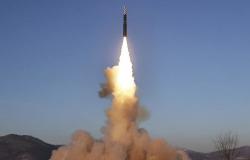Have you ever found it difficult to imagine the evolution from dinosaurs to chickens? A recent study conducted by University College London (UCL) and the University of Vigo in Spain has resolved another piece of this evolutionary chain: everything could depend on a series of colossal volcanic eruptions that occurred in prehistoric times.
Research has the moment in which some dinosaurs developed endothermy has been revealed, i.e. the ability to regulate one’s body temperature and generate internal heat. This characteristic, shared today by all mammals and birds, may have emerged about 180 million years ago, in the early Jurassic period, when intense volcanic activity forced species to adapt to global climate changes.
Known as the Jenkyns event, this period saw Lava and volcanic gases erupt from huge fractures in the Earth’s surface, causing global warming and the extinction of many plants. This event would have divided major groups of dinosaurs, leading them to develop different climate preferences.
Dr. Alfio Alessandro Chiarenza, first author of the study published in Current Biology, told BBC Science Focus that he was surprised by the results, in particular by the coincidence of evolutionary change with the Jenkyns event. “This is a relatively new hyperthermal event in our geological record, and the fact that it may have had such a large influence on global ecosystems and the evolution of dinosaurs is a rather new concept.“
By analyzing the spread of dinosaurs across Earth’s different climates during the Mesozoic era through fossils, climate models, geography and evolutionary trees, the researchers found that two of the three major groups of dinosaurs moved to colder climates, responding with endothermy. These two groups include theropods (such as T.rex and Velociraptor) and ornithischians (including relatives of Stegosaurus and Triceratops).
The third group, the sauropods (which includes huge dinosaurs like Brontosaurus), remained in warmer regions and continued to be cold-blooded. Endothermy may have allowed dinosaurs to grow more rapidlyproduce more offspring and sustain physical activities for longer, thus helping their evolutionary lines to survive despite difficult environmental conditions.
Understand how climate influenced the evolution of dinosaurs could provide important insights into how the current climate crisis is affecting species today. “An additional reason to investigate and better understand global warming events in our geological past is to understand what effects they may have on biodiversity” concluded Chiarenza. “A lesson from the profound past for our future.“
In this regard, here is Shiva, the largest dinosaur ever discovered.
On Amazon Fire TV Stick Lite with Alexa Voice Remote It is one of today’s best sellers.





